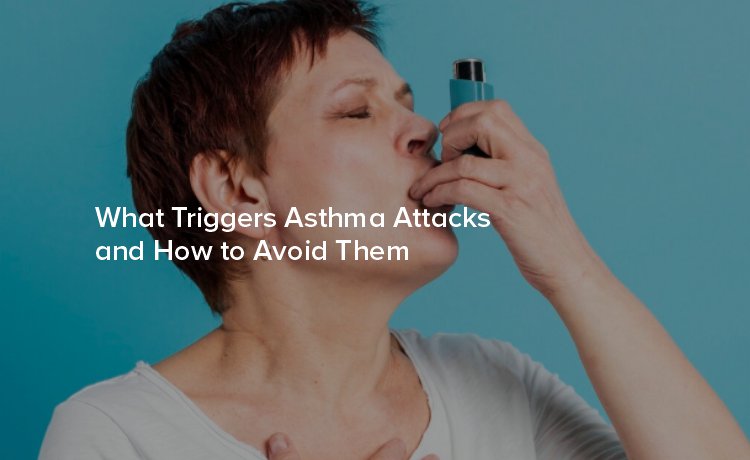
What Triggers Asthma Attacks and How to Avoid Them
In India, an estimated 35 million people are affected by asthma, representing 13.09% of the global burden, with nearly half of these cases involving children. While asthma management has come a long way, knowing how to prevent attacks remains a crucial part of living with this condition. Asthma attacks, characterized by symptoms like wheezing, chest tightness, and difficulty breathing, can be triggered by a variety of factors such as allergens, environmental conditions, and lifestyle choices.
Understanding Asthma and Its Triggers
Before tackling the triggers, it’s essential to understand what asthma is. Asthma is a chronic condition where the airways in your lungs become inflamed and narrow, making it difficult to breathe. When exposed to triggers, the airways react by tightening, swelling, and producing excess mucus, which leads to an asthma attack.
While no two asthma cases are identical, certain triggers often appear across the board.
Common Asthma Triggers
Allergens
- Dust Mites: These tiny pests thrive in bedding, carpets, and upholstered furniture. Dust mite waste can provoke a strong allergic reaction, leading to asthma symptoms.
- Pollen: Trees, grasses, and weeds release pollen, making spring a particularly challenging time for those with asthma and seasonal allergies.
- Animal Dander: Proteins found in pet skin flakes, saliva, or urine can cause reactions in sensitive individuals.
- Mold: Mold spores in damp areas like bathrooms or basements can irritate your airways.
Environmental Irritants
- Tobacco Smoke: Not only does smoking harm your lungs, but secondhand smoke can also be a potent asthma trigger.
- Air Pollution: Urban areas with high pollution levels can worsen asthma symptoms due to particles that irritate the respiratory system.
- Strong Odors: Perfumes, cleaning agents, and other chemical fumes can induce attacks in some people.
Respiratory Illnesses
- Colds, flu, and viral infections can inflame the airways, making them more sensitive to other triggers.
Exercise
- Physical activity, especially in cold, dry air, can sometimes induce exercise-induced bronchoconstriction (EIB), a form of asthma.
Weather Conditions
- Sudden changes in temperature, extreme cold, or humid air can make it harder to breathe for those with asthma.
Stress and Strong Emotions
- Emotional extremes, such as intense stress, laughter, or anger, can lead to rapid breathing, which might result in an asthma attack.
How to Prevent Asthma Attacks
Now that we’ve outlined the most common triggers, the next step is learning how to avoid or minimize exposure to these triggers.
1. Manage Allergens in Your Home
- Reduce Dust Mites: Use dust-proof covers on pillows and mattresses, wash bedding in hot water weekly, and use high-efficiency particulate air (HEPA) filters in your vacuum cleaner and air purifiers.
- Control Mold Growth: Keep humidity levels in your home below 50% using a dehumidifier. Clean bathrooms and other damp areas regularly.
- Limit Pet Exposure: If you’re allergic to pets, consider designating pet-free zones in your home, such as bedrooms. Wash pets frequently to reduce the spread of dander.
2. Avoid Environmental Irritants
- Don’t allow smoking in or near your home.
- Stay informed about air quality levels in your area. Avoid going outside during high-pollution days or when pollen counts are high.
- Use non-toxic, fragrance-free cleaning products whenever possible.
3. Strengthen Your Immune System
- Get vaccinated against flu and pneumonia to avoid respiratory infections that may exacerbate asthma.
- Practice good hand hygiene, especially during cold and flu season, to minimize exposure to germs.
- Maintain a healthy diet rich in fruits and vegetables, which contain antioxidants that support lung health.
4. Use an Action Plan for Exercise
- Consult your healthcare provider to create an asthma action plan tailored for physical activity.
- Warm up thoroughly before exercising and cool down afterward.
- If you experience symptoms during exercise, stop and use your quick-relief inhaler.
5. Monitor Weather and Plan Accordingly
On cold days, wear a scarf over your mouth and nose to warm the air before it reaches your lungs.
- Stay indoors during rainy or humid conditions if mold or pollen triggers your asthma.
6. Practice Stress Management
- Incorporate relaxation techniques like deep breathing, meditation, or yoga into your daily routine.
- Don’t be afraid to seek emotional support or professional counseling if stress or anxiety worsens your asthma.
7. Take Prescribed Medications Regularly
- Make sure you’re using your controller and quick-relief medications as prescribed.
- Always carry your inhaler so you’re prepared if symptoms begin.
When to See a Doctor
If your asthma attacks become more frequent or severe despite preventive measures, it’s time to consult a healthcare provider. They may adjust your medication dosage or recommend additional treatments. Allergy testing or testing for exercise-induced asthma may also be helpful.
You should also seek medical attention if:
- You use a quick-relief inhaler more often than usual.
- Your asthma symptoms wake you up multiple times a week.
- You find yourself avoiding activities due to fear of triggering an attack.
Breathe Easy and Take Control
Asthma can be a challenging condition, but understanding your triggers and taking proactive measures can significantly improve your quality of life. Remember, prevention is key. By taking small steps like allergen-proofing your home, managing stress, and sticking to your prescribed asthma action plan, you can reduce the frequency of attacks and feel more in control of your condition.
If you or someone you love struggles with asthma, share this guide to spread awareness and help others breathe easier.
